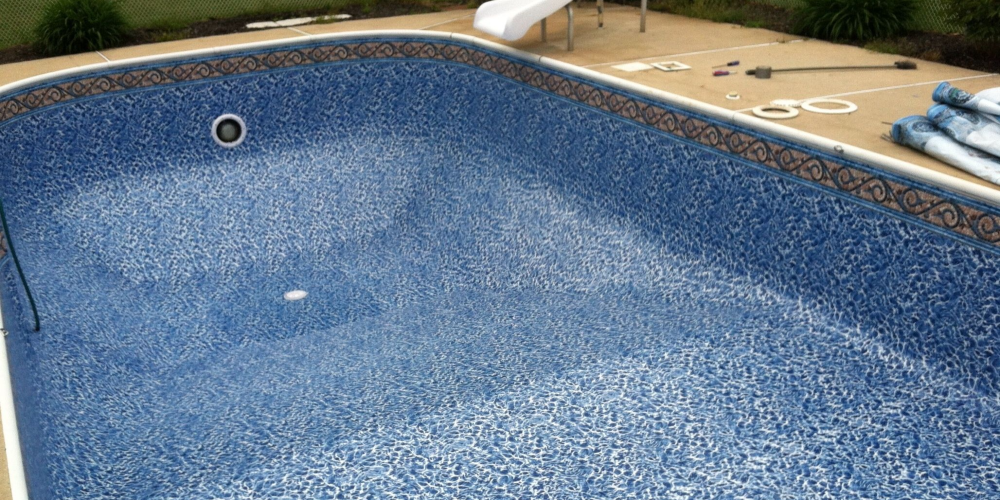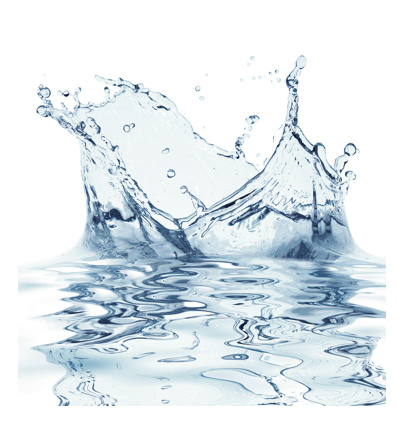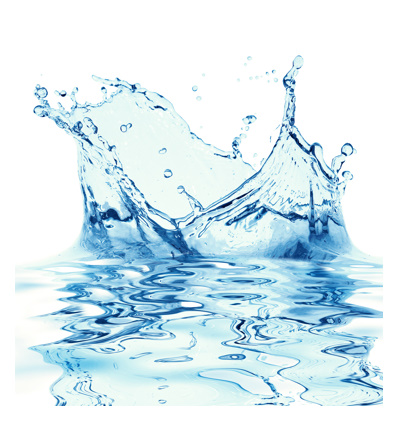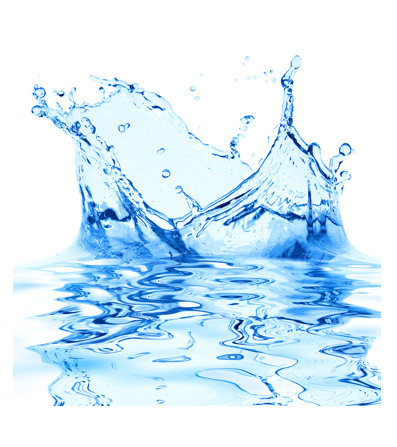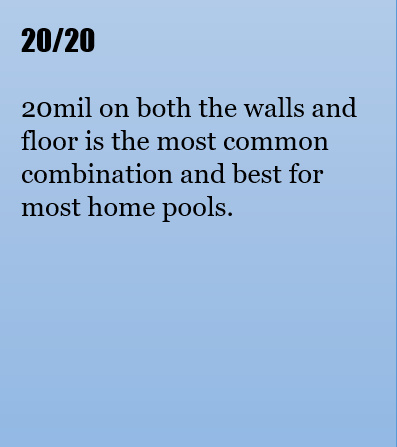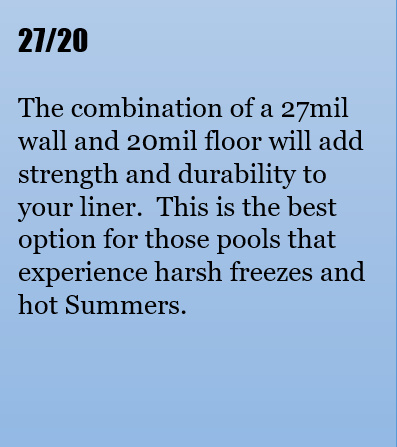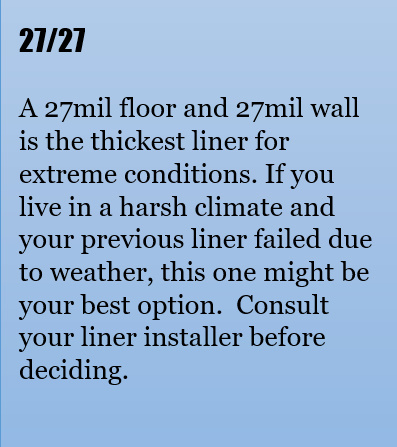Your Complete Guide To Inground Swimming Pool Liners
So, it's time to replace that old one with a new one? Where do you start? You might be asking yourself, "What the most important part when buying inground swimming pool liners?" Could it be the price, selection, service, pattern, thickness, or warranty? Well, honestly, it's none of those. So for now, we are going to talk about everything you need to know when it comes to inground pool liners.
What Is An Inground Pool Liner?
As with many things concerning pools, this is easy. Inground swimming pool liners are designed to hold the water inside the swimming pool. That's fairly easy, right. Think of filling a Ziploc back full of water. But unlike a plastic bag, a pool is a very important structure. It can be dangerous to remove all of the water from an inground swimming pool and most vinyl liner manufacturers dissuade pool owners from doing this.
And that's not all. Inground pool liners also contribute to how the pool looks. The time is long gone that you were relegated to one stark white color. You now have an endless supply of layers, textures, and colors from which to choose. The color of the vinyl liner impacts the aesthetics of the pool, so choose wisely.
When Should I Replace My Inground Pool Liner?
Inground pool liner technology has come a very long way since I started in the pool business back in March 1999. But one thing is certain and consistent: things get old and will need to be replaced. For a well constructed, properly installed, and cared-for inground pool liner, you should be able to get anywhere from 10 - 15 years of life out of it. This section will touch on a few reasons why you might need to replace your inground pool liner.
Your Liner Is Old
Even the best pool liner will need to be replaced at some point. Time is unbeaten and age catches up to everything. Your pool liner is no exception. The years of chemicals, swim parties, and environmental issues will cause your pool liner to fade and to need to be replaced.
Your Pool Liner Is Ripped
Over time, a vinyl pool liner can deteriorate from the the heat of the Sun and imbalanced chemicals. These factors can cause the vinyl to become brittle which can cause it to tear more easily, thus increasing the chances of the pool liner to leak.
The Color Has Started To Fade
The sun ravages everything in its path. If you have sun on your pool most of the day and one that's not covered by trees or another type of shade, then expect your liner to start to fade within a few years. This is especially true if you live in a hot climate such as here in Florida, Texas, Arizona, or southern California. Vinyl liner fading is slow process, but it does eventually happen.
Water Loss
Sometimes small rips and tears are easy to spot, and sometimes not. It's a good idea to monitor the level of your water and keep it in the right range of 1/3 - 1/2 up from the bottom of the skimmer. Most pools will lose a certain amount of water during the swimming season through evaporation, but a leak is a different story.
If you suspect your pool might be losing water, you can perform a simple test called the "bucket test". Fill the bucket with pool water to the same level as the water in your pool, mark the bucket with a water proof grease pen or Sharpie, and place the bucket on the first step. The water in the bucket will evaporate at the same rate as it does in the pool. This gives you a way to determine if the pool is losing water in ways other than evaporation.
Check back in a couple of days. If the water level is lower in your pool than it is in the bucket, you can be fairly certain you have a leak and you’re not losing water purely due to evaporation. Now it's time to call in the professional leak detection company to pin-point the leak.
How To Clean Inground Swimming Pool Liners
Caring for a new vinyl liner is easy when we follow a few simple suggestions:
- Balance Your Chemicals - This is the most important part. By maintaining our chemicals, it will certainly extend the life of our liner.
- Brush and Vacuum - Remove debris such as leaves to sticks to twice per week or as needed to prevent staining and rips. This also helps keep your pool water looking perfect and more inviting.
- Buy The Right Size Liner - This is a pro tip. When you buy a replacement pool liner, you'll want the liner installers to first remove the old liner and measure it against the new liner. This allows for a more accurate measurement and reduces the amount of stretching needed to get the new liner in place.
- Patch Leaks - If your pool liner leaks, the water must go somewhere, and that is normally behind the liner and onto metal surfaces. This will cause rust and if left untreated, can damage the bottom of the pool. The longer you wait to repair a leak, the more damage is done. And tears will only grow in size, they'll never get smaller. At some point the pool liner will be past the point of no return and will need to be replaced.
Most Important Part Of Installing Pool Liners
I believe the most important part of the selection process of buying an inground swimming pool vinyl liner is the pool liner manufacturer and contractor who is going to do the vinyl pool liner installation. Yes, everything else will blur your mind.
Let's say you hire a contractor that doesn't how to install a pool liner? Then what? You're stuck looking at wrinkles and bumps. Ever catch your toe on a seam? It doesn't feel very good. What if the contractor misses a measurement? Say the guy down the street sells a name brand like Doughboy pool liners, installs it, then leaves town in two years. What now? Hiring a qualified and trusted liner installer is of the utmost importance to the health and longevity of your pool.
You'll need to do your homework and choose a quality and qualified pool professional that's local and will guarantee the work to your satisfaction and will do any swimming pool liner repair if needed. Making this kind of decision is very emotional. The excitement of getting a new or replacement pool liner is like getting a new car. The smell and feel is sometimes too much for people to handle, especially if they're passionate about their pools. There are many available liners on the market and each one is probably very good in its own right.
But the product is only as good as the contractor who installs inground vinyl liners.
Choosing Inground Swimming Pool Liners
So you're finished with the first part. You've done your research, found a good local contractor, and now it's time to choose your inground vinyl liner. Next is the fun part. The most important aspect of going through the pool vinyl liner process is to choose the one that "speaks" to you. I know this may sound a little corny, but it's true. When you see all those perfect vinyl liners, you'll know which one is for you. Remember, you'll be looking at this color and pattern for the next few years, and you'll want to make sure it's right.
What YOU think matters most, and nobody else.
Choose The Right Tile Pattern
Will you have tile, or not? That's a decision that only you can answer. The tile pattern can add a nice little accent piece to your pool, but it could take away from the liner effects you're hoping for. All that matters is that you like it and works in your world.
Your Pool Water Color
That may sound just a bit strange. Shouldn't water be clear? Yes it should be, but when you have a colored pool liner, the water will change colors. You might want a slight blue, or a hint of color here and there. Rich blue colors and patterns have the most "oomph" while lighter shades of blue, Aqua, and Turquoise will have a beautiful glistening effect.
Choose The Right Pool Liner Thickness
Standard liner thickness is 20 mil. although you can go higher. The fit of the liner is also important for longevity and durability.
How Much Does It Cost To Replace An Inground Pool Liner?
It can vary from region to region, but typically you'll be looking at around $3,000 - $5,000 to replace your inground pool liner. Above ground pools are much less and can start around $500 and go up from there. For an upfront cost on a new vinyl liner pool, you would be in the ballpark of around $35,000 - $50,000. This depends on some factors that we'll take a look at.
- Size of Pool - The larger the pool, the larger the upfront cost. You'll pay more per square foot for materials and labor.
- Shape of Pool - A circle or rectangle is easier to cut, compared to a custom pool with many angles and features. Curves are more complicated than straight lines. If this is a DIY project, you're better off with a rectangle pool or something similar.
- Steps and Benches - Vinyl liner pools will usually have steps, and white plastic steps are standard. You can choose to cover the steps with a liner or not. The type of upgraded steps that are built inside the pool rather than jutting out are called "vinyl over steps" and can add an additional $500 - $3200 depending on the features, angles, and size of the steps.
- Type of Coping - Coping is the area surrounding the top perimeter of the pool. It's a smooth transition from the pool to the deck or patio. For vinyl liner pools, the standard is white aluminum C-channel coping. The rounded portion of the coping, or C-channel, is commonly known as "bullnose" coping. This is bolted on the top of the pool wall as a permanent border for the deck concrete.
- Professional or DYI Installation - To save money, many people choose to install their inground vinyl liner themselves. This can save anywhere from $7,000 to $12,000 on the installation cost. Depending on the experience level of the DYI installer, it will probably take longer than a professional installation. You also run the risk of inaccuracy and might miss opportunities for freeform curve cutting which can be a real pain to try to fix later on during the installation process.
- Region - Different regions will have different prices. I noticed that large metropolitan areas such as Phoenix and Florida have different prices than those in Oregon. You're going to pay more for a vinyl liner pool in places that pools are not all that common.
- Vinyl Liner Thickness - Thinner vinyl liners are less expensive that thicker liners and are easier to work with, but they have a tendency to puncture and tear more easily. Thicker vinyl liners are more expensive and can be somewhat difficult to mange and wield. Being thicker, they provide more protection from a stray tree branch or an overenthusiastic swimmer.
How Long Do Inground Swimming Pool Liners Last?
You'll find the average inground pool liner will last between 5 - 10 years. The average above-ground pool liner will last about the same amount of time. Please keep in mind this is in a perfect world. Many factors must be taken into consideration such as sun, heat, UV rays, and pool chemistry. Most pool liners have a "25 - 30 year" warranty.
Check your contract because many warranties are extremely prorated. A vinyl liner that has a 25 year warranty may only have a FULL warranty for 2 - 5 years, then the prorate starts. Please don't think that if your liner rips in the 24th year, you can simply call up the manufacturer and get a brand new liner installed for free. As they say in Virginia, where I'm from, "that sure ain't not never gonna happen".
Compared To Plaster
Plaster pools also degrade over time and you should expect 10 - 20 years of life with balanced chemicals and proper care. Other variables should be considered like the ones that were just mentioned. After that amount of time you will either need to get your pool re-plastered, or at minimum, have it painted.
Compared To Fiberglass
Fiberglass pools are great but they, like vinyl and plaster pools, won't last forever. The gelcoat can becomes scratched and can fade and crack. The cost of repairing fiberglass can be double what you might expect to pay for a new liner.
Line Up For The Best Liner
If this all seems a little overwhelming, no worries. Installing inground swimming pool liners is not for the faint of heart. Don’t be afraid to hire a professional to replace the liner for you. With a little TLC and some good information, your new inground pool liner will stay in perfect shape for years to come.
What Other Visitors Have Said
Click below to see contributions from other visitors to this page...
Dark Ring Along Vinyl Liner Near Bottom Of Pool Walls 




We installed a vinyl liner for a polymer wall pool. We did everything in the usual manner. We never had any hand in treating the pool water, maintenance …
Is The Liner Too Small For The Pool? 




We are looking to purchase a home that has what looks like a Grecian style inground pool. The liner was replaced in the fall of 2012 and is still under …
Light yellow streaks in low end on vinyl pool liner Not rated yet
I have a 28,000 gallon in ground pool with vinyl liner, using a nautilus DE filter, about 30 years old. The pool is a swamp every year when I open it, …
